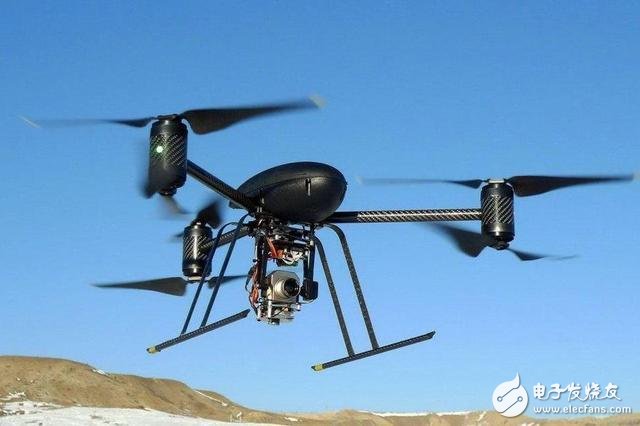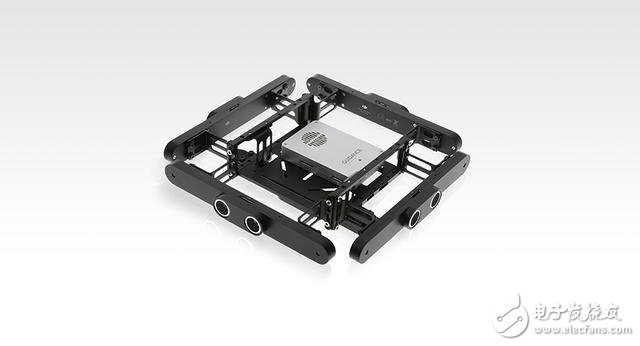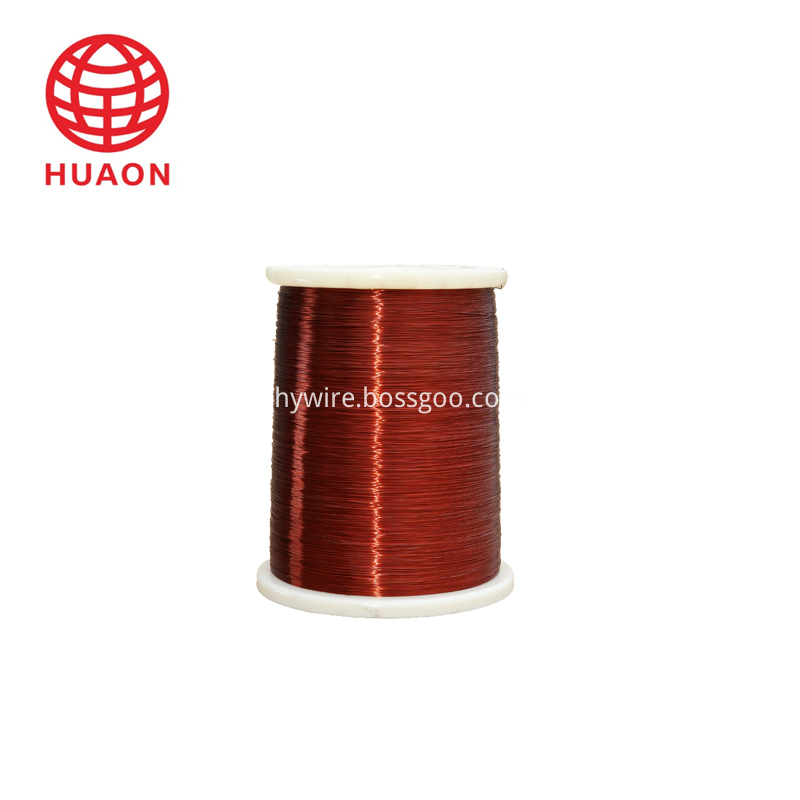If a drone wants to be titled an artificial intelligence machine, of course, it can't just be satisfied with "flying up"! Regarding the concept of the future "artificial intelligence drone", the drone is usually imagined as a flying robot. This flying robot can not only communicate with people, but also complete tasks or solve problems independently.
In fact, these highly intelligent functions are already under development. Today, AOPA Cloud Xiaobian is about the obstacle avoidance technology in the "black technology" of drones!

What is the UAV obstacle avoidance technology?
As the name implies, it is the intelligent technology that drones autonomously avoid obstacles. Many of the friends who have played with drones know that drones with obstacle avoidance and drones without obstacle avoidance can be said that the experience is very different! The UAV automatic obstacle avoidance system can avoid obstacles in the flight path in time, greatly reducing the losses caused by operational errors. While reducing the number of bomber accidents, it can also greatly help the novices newcomers!
UAV obstacle avoidance technology development stage and trend
According to the current development of UAV obstacle avoidance technology and its future research situation, some data analysis shows that UAV obstacle avoidance technology can be divided into three stages, one is the obstacle obstacle phase; the other is to bypass the obstacle phase; It is the scene modeling and path search phase. These three stages are actually the process of the UAV obstacle avoidance technology. From the discovery of obstacles by drones, to the process of automatically bypassing obstacles and then reaching the self-planning path.
Could someone ask the drone to reach the first stage of “discovering obstacles†and it is not easy to avoid obstacles? This second stage is not superfluous!
In fact, the division of the three stages of UAV obstacle avoidance is based on technology. The specific technical analysis of each stage is as follows:
In the first stage, the drone can only be a simple obstacle to the obstacle. When the drone encounters an obstacle, it can be quickly identified and hovered, waiting for the next step of the drone driver!
In the second stage, the drone can obtain the depth image of the obstacle, and thus accurately perceive the specific contour of the obstacle, and then autonomously bypass the obstacle! This stage is to get rid of the flying hand operation and realize the stage of drone autonomous driving!
In the third stage, the drone can build a map model for the flight area and then plan a reasonable route! This map can't just be a mechanical plane model, it should be a three-dimensional map that can be updated in real time! This will be the highest stage of the current UAV obstacle avoidance technology!
Several major technologies that can now realize the obstacle avoidance function of UAVs
Regardless of the development stage of the UAV obstacle avoidance technology, the development of UAV obstacle avoidance technology is currently a multi-development model. Old technology is being phased out, new technologies are being improved, but overall it is constantly adjusting the way forward! On the whole, there are currently six types of UAV obstacle avoidance technology!
First, the ultrasonic obstacle avoidance
Ultrasound, a metaphor for a comparative image is a bat. The bat emits ultrasound through the special configuration of the throat in the mouth. When the ultrasound encounters prey or obstacles, it reflects back. The bat can use a special auditory system to receive the reflected signal, thereby detecting the distance of the target and determining the flight path. .
This is a very common and very mature technology! Due to the strong directivity of the ultrasonic waves and the slow energy consumption, the distance traveled in the medium is far, so ultrasonic waves are often used for distance measurement. Moreover, the use of ultrasonic testing is often quick, convenient, simple to calculate, easy to achieve real-time control, and can meet industrial and practical requirements in terms of measurement accuracy, so it is very suitable for obstacle avoidance.
At present, there are many home car radars on the market that use this technology. In the specific application of the drone, the keystone keyshare drone uses ultrasonic obstacle avoidance technology.
But ultrasonic ranging is not a perfect technology. Although the ultrasonic obstacle avoidance system is not exposed to light, dust, and smoke, it is also subject to sound waves in some scenes. Secondly, if the ability of the surface of the object to reflect ultrasonic waves is insufficient, the effective distance of the obstacle avoidance system will be reduced, and the safety hazard will be significantly improved. In general, the effective distance of the ultrasonic wave is 5 meters, and the corresponding reflective object material is cement floor. If the material is not a flat solid object, such as a carpet, the reflection and reception of the ultrasonic wave will be problematic. The distance is short and the ability to perceive obstacles is limited, so the situation of ultrasonic obstacle avoidance is still rampant. This is why the effective obstacle avoidance distance is very short for UAVs that use ultrasonic obstacle avoidance.
Second, infrared or laser ranging obstacle avoidance
The English name for infrared or laser obstacle avoidance technology is “TIme of flightâ€, which is often abbreviated as “TOFâ€. Therefore, infrared or laser obstacle avoidance technology is also called time-of-flight ranging method.
The working principle of TOF is very similar to the principle of ultrasonic ranging and obstacle avoidance. The biggest difference is that the ultrasonic wave is replaced by infrared or laser! There are two methods for detecting this technology: one is the time of light, and the other is the phase of light. But no matter which method, it emits light, then detects the reflected light, and then determines whether there are obstacles around the drone, so as to know the distance of the obstacle.
The zero-degree Xplorer 2 drone uses the TOF obstacle avoidance system. In the zero degree Xplorer 2 drone hovering state, the TOF system will maintain a fast rotation of 2-5 turns per second. In this way, the TOF can quickly scan the 360° range within the effective radius around the rotation process, thereby finding the obstacle at a faster speed, and then issuing an instruction to adjust the position of the flight control system to avoid the surrounding people or Property damage; while the drone is in flight, the TOF system stops spinning and only emits light into the direction of the drone. When fixed in the direction, the effective distance outside can be increased to 8-10 meters. For a general drone, the flight distance per second is about 10 meters. When the reaction time is 1 second after the obstacle is detected, the drone can stop moving forward with a large acceleration, which is enough.
However, like ultrasonic waves, light waves are also disturbed. At present, the light pollution between buildings in urban environment brings difficulties to the TOF obstacle avoidance system. The light emitted by the system must avoid the main energy band of sunlight, so as to avoid direct interference and reflection of sunlight to the obstacle avoidance system. Therefore, it requires a very precise time measurement, and even requires a dedicated processing chip. At present, the price of the chip is relatively high.
Third, visual image composite technology
The visual image conforming technology captures an image with a sufficiently high, clear, and high frame rate through a high-definition camera, and analyzes each frame of the image for obstacles with a small enough powerful processor. The visual image composite technology has become the first choice for drone avoidance with the leap of computing power of mobile chips.
The intelligent obstacle avoidance system "Guidance" is a typical visual image composite technology. There are cameras for obstacle recognition in the front, rear, left and right directions of the Guidance system. The recognition mechanism also has two kinds of ultrasonic and image vision. That is to say, in addition to the conventional ultrasonic module, a camera is specially placed in five directions for acquiring a visual image, and then directly transmitted to the on-board processor for calculation.

Parrot, which entered the consumer drone market earlier, is also working with Nvidia on obstacle avoidance, as well as a composite obstacle avoidance system that includes machine vision. The MIT computer science and artificial intelligence laboratory also uses this technology to explore obstacle avoidance technology, but they use real-time image processing through two mobile phone chips to find free space to fly, instead of identifying obstacles. Dodge. It can be said that it is a very active method. However, this drone can only process video data in a few seconds, instead of generating a complete regional map. After all, the processing power of existing mobile phone chips is still limited.
Fourth, Real Sense technology
The RealSense 3D camera jointly developed by Microsoft and Intel uses its own infrared emitter to "actively illuminate" the target, automatically calculates and constructs a three-dimensional model in the coverage area by capturing and locating the distortion of the light, and relies on its own processing. The instrument completes the integration of the basic data and performs more complicated operations with the processor equipped with the device, thereby automatically adjusting itself to avoid obstacles.

RealSense is also essentially an infrared structured light projection scheme similar to the XBOX360 external 3D somatosensory camera. The difference is that RealSense projects a series of dynamically changing patterns instead of a fixed pattern like Kinect. Therefore, although the resolution of RealSense is higher and more stable, the frame rate is not as good as that of Kinect, and the actual effect does not reflect the expected advantages.
Five, radar
Radar, the most widely used is the military field, and it is rarely used in the civilian phase! There is no precedent for use in consumer drones!
However, not long ago, a UAV obstacle avoidance flight competition was held at the Unmanned Traffic Management ConvenTIon (UTM 2016) in Syracuse, New York. The drone program provider Aerotoenna won the championship.
In addition to the wonderful game, the obstacle avoidance technology of the drone is also called the hot spot at that time! Unlike the ultrasonic or binocular schemes used by conventional drones, Aerotenna's obstacle avoidance scheme uses a radar-based μSharp 360-degree microwave radar, and is equipped with a radar altimeter μLanding as an indoor fixed height. The effect of circumvention has a clear advantage over traditional solutions.
But the cost of radar is still relatively high compared to other obstacle avoidance techniques!
At present, the radar scheme is implemented on the drone, and the cost is slightly more expensive than binocular and ultrasound, but it is not expensive. For a reference example of price, the "ultrasound" is a little better than one or two hundred (RMB), the binocular camera is slightly better about 600 to 1,000, and the microwave radar is currently around $1,000 (depending on the price of the solution) Not the same), but this price is also affected by the production volume, and the future production will go down accordingly.
However, due to the reliability of the radar and the advantage of being less affected by the environment, it will definitely shine in the future of the UAV obstacle avoidance technology!
Sixth, electronic map
When the flight target area is modeled as a precise three-dimensional map, with the aid of a navigation system such as GPS, it is possible to achieve autonomous flight avoidance of obstacles.
By preloading the three-dimensional map of the target area on the drone, you can know the specific location of the obstacle so that it can be avoided in advance when flying. Moreover, during flight, the drone can also select the optimal path from multiple paths, which can greatly speed up the task!
And the current three-dimensional map development is also very fast, although the data can not be very accurate, but there is still a very big improvement! With the improvement of accuracy, drones use 3D maps to avoid obstacles, which is still very promising!
Having said so many UAV obstacle avoidance technologies, which technology will dominate the future? It is based on AOPA cloud Xiaobian, I think that in the future, drones will not only adopt a single technology to achieve obstacle avoidance, but may adopt a variety of obstacle avoidance technology integration methods to achieve obstacle avoidance in different scenarios! Let us, these visions must be built under the condition that the technologies are very mature, especially when the manufacturing process is very mature, so that we can better popularize the UAV obstacle avoidance technology and let the flying friends fly with confidence!
|
About EIW Enameled Copper Wire. |
Class 180 polyester-imide Enameled Copper Wire, with high thermal properties and good chemical resistance. Good thermostability under 150℃working environment.
Used in all sizes of H class motors, transformers, instrumentation, various types of electronic components and winding for coils.

According to the design of motor characteristics, the breakdown voltage is 60% higher than the national standard, the resilience is 20% higher than the national standard, and the adhesion is 15% higher than the national standard. Thin insulation thickness, low slot full rate, improve the efficiency of manual embedding. Suitable for manual and automatic machine winding and embedding.
Magnet Wire,Eiw Enameled Copper Wire,Insulated Enameled Coated Wire,Electrical Enameled Copper Wire
HENAN HUAYANG ELECTRICAL TECHNOLOGY GROUP CO.,LTD , https://www.huaonwire.com